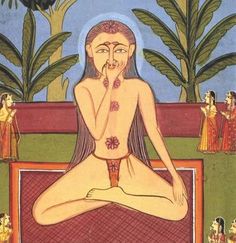At a glance:
Module II - November 2015: Wednesdays 2:00 to 4:30 pm (dates: 4/11, 11/11, 18/11, 25/11)
Module III - February – March 2016: Wednesdays 2:00 to 4:30 pm (dates: 17/2, 24/2, 2/3, 9/3, 16/3, 23/3)
* Note: the three modules are progressive, each module is a pre-requisite for the next.
Each Wednesday session will include a two-hour presentation and a half hour pranayama practice.
What to expect:
The fourth part or “limb” in Patanjali’s classical yoga system, pranayama is a vast discipline that enable yoga practitioners to access the deep layer of energy within the self. Ancient yogis described a number of techniques, but not all of them should be practiced by everyone at all times.
This course will give you an understanding of the following:
– What is pranayama?
– What is prana?
– What is the yogic breath and what are its benefits?
– Why is pranayama regarded as “the most important practice”?
– What are its purposes?
You will also learn:
– How to practice 11 techniques of pranayama
– About ratios, kramas and bandhas in pranayama
– How to assess a student’s breath
– The use of mantras in pranayama
– How to evolve in the practice of pranayama
There will be three modules, for a total of 35 hours:
Module I: the basics: 10 hours, 4 weeks
– Concept of prana
– Definitions of pranayama in classical texts
– Anatomy of breathing (from the modern perspective)
– Preparation and pre-requisites
– General purposes and effects of pranayama
– Presentation of the yogic breath
– The components of pranayama
Module II: the techniques (part 1): 10 hours, 4 weeks
– More about the yogic breath
– “Normal” techniques and “special” techniques (overview)
– Mrgi-mudra and the nostril control technique
– Study of 8 pranayama techniques (benefits, effects, contra-indications, etc.)
Module III: the techniques (part 2): 15 hours, 6 weeks
– Three more pranayama techniques
– Two types of ratios in pranayama
– How to assess a student’s breath
– Samantraka-pranayama: mantras in pranayama
– The three bandhas… and a fourth
– Progression in pranayama practice
Official links:
- The race ratings are formed by our readers and may not reflect the site owners' opinions.
- This database is built and maintained by our users. All information are correct to the best of our knowledge, however, the fact that a particular message / article / media is posted on or transmitted using this web site does not mean that JustRunLah! has endorsed that message in any way or verified its accuracy, completeness or usefulness.
- All logos, photos and artwork copyrights belong to their respective owners. We encourage our users to link back / credit all sources. If you are the copyright owner of any of the logos or photos used and you would like them removed, please contact us and we will do so.


